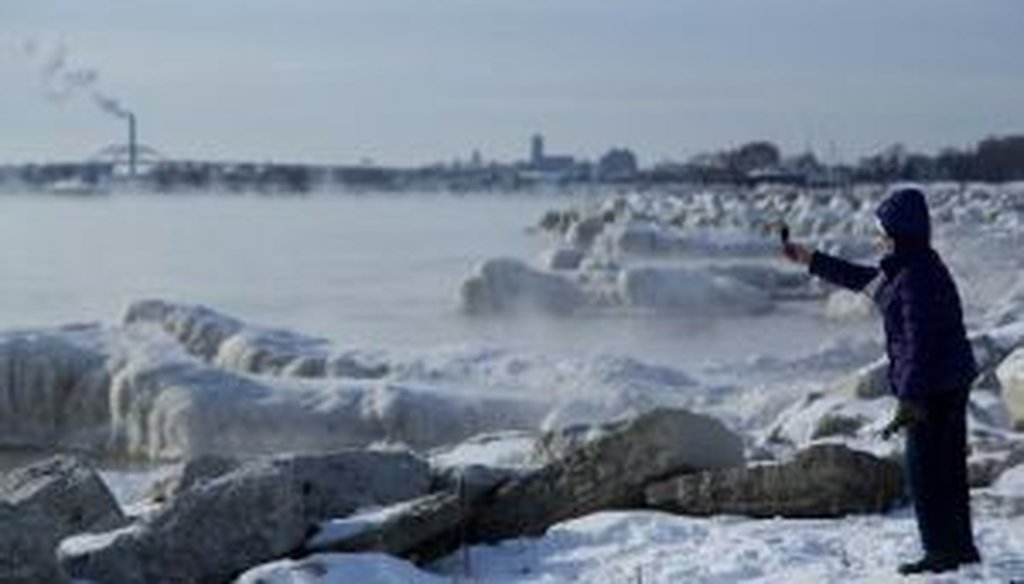Stand up for the facts!
Our only agenda is to publish the truth so you can be an informed participant in democracy.
We need your help.
I would like to contribute

Someone takes a picture along the shore of Lake Michigan with temperatures in the negative digits on Jan. 7, 2014, in Milwaukee. A "polar vortex" of frigid air centered on the North Pole had dropped temperatures precipitously. (Getty Images)
Last updated Wednesday, January 8th, 2014 at 2:21 p.m.
The polar vortex descended from the North Pole on Sunday night, resulting in unusually cold temperatures throughout the United States and Canada. The Midwest has been hit especially hard, with subzero temperatures and scarily low wind chills that kept schools and workplaces closed the next couple of days.
This weather phenomenon fed into a larger conversation on topics like global warming and even outer space.
Nothing makes us feel warm and fuzzy inside quite like getting at the cold, hard truth behind the rhetoric. Get up to speed on our polar vortex fact-checks:
The media created the term "polar vortex" and the cold air proves "the ice isn’t melting."
-Rush Limbaugh, Jan. 6, 2014, on his radio show
Climate scientists told PunditFact that Limbaugh is wildly misinformed. The polar vortex is a concept that’s been talked about in scientific circles since the 1940s. Similarly, although the cold weather means ice caps aren’t melting right this second, experts agree that sea ice keeps shrinking. We rated Limbaugh’s claim Pants on Fire.
It’s warmer on Mars than it is in parts of the United States and Canada during the polar vortex.
-Tweets, Jan. 7
It’s true that parts of Mars can be warmer than the coldest U.S. and Canadian cities. But scientists told us the average air temperature on Mars is minus 50 degrees Fahrenheit. This makes perfect sense, because Mars is tens of millions of miles farther away from the sun than Earth is. We rated this claim Mostly False.
Our Sources
See original Truth-O-Meter item.





















































